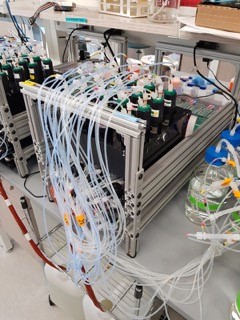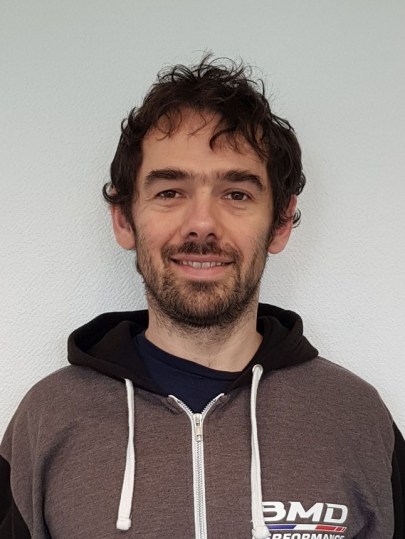Damien CoudreuseInstitut de génétique et développement de Rennes - CNRS / Université de Rennes
Mes recherches
Throughout my scientific training I have been interested in various questions, regularly changing subject and model system. However, most of my projects have taken advantage of simple genetic models. After a PhD at the Hubrecht Institute (Utrecht, The Netherlands) studying the Wnt signalling pathway in C. elegans (Supervisor : Dr. Rik Korswagen), my post-doctoral training at the Rockefeller University (New York, USA – Supervisor : Dr. Paul Nurse) used the biology of the fission yeast Schizosaccharomyces pombe to decipher core aspects of the mechanisms underlying cell proliferation. To this end, I took a synthetic approach and generated cells that operate with a simplified cell cycle control system. This work has been the foundation of most of the research in my lab, which focuses on various questions, from the dynamic control of cell cycle progression to the interplay between cell cycle architecture and cellular aging to the use of experimental evolution to uncover alternative paths to growth…all of this using fission yeast as a model.
Mon projet ATIP-Avenir
Evolution, dynamics and variability of a synthetic eukaryotic network
Essential cellular functions rely on complex networks that coordinate highly dynamic and integrated processes. Paradoxically, our detailed knowledge of their molecular mechanisms has made it difficult to fully appreciate the core concepts involved. Fundamental principles such as the acquisition of complexity in a simple evolving genetic circuit, the role of the core dynamic features of the circuit in the integrity of its output, and the buffering of molecular variability that affects its various steps remain poorly explored. The aim of this project was to use fission yeast cell cycle control as a model essential eukaryotic network to address these challenging questions. Recently, a more conceptual approach to investigating complex processes has emerged, based on artificial rewiring and simplification of cellular circuits. Using this synthetic strategy, we explored the minimal architecture of the mitotic cycle and demonstrated the capacity of fission yeast cells to adopt simpler cell cycle engines. We then constructed a series of rewired minimal networks that drive the cell cycle to further study the basis of its temporal sequence and to determine the roles of apparently dispensable controls. To assess how primitive genetic networks may have acquired complexity, laboratory evolution experiments using these simplified cells have been performed and have revealed unexpected players in the control of cell proliferation. However, evolution of multilayered regulation in a process must be integrated within the framework of its essential dynamic events. We evaluated this aspect of cell proliferation by single cell and population analyses of our synthetic strains, investigating the critical dynamic and temporal features of its core controls. In particular, this led us to uncover how the dynamics of cell cycle control play a role in limiting the effect of molecular noise and ensuring population homogeneity.

Experimental evolution with fission yeast using eVOLVER.
Damien Coudreuse est également lauréat ERC Starting Grant 2012.
